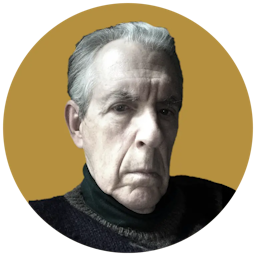Confronting Speculation Over an Icon’s Untimely Death in ‘What Killed Marilyn Monroe’
No other biographer has presented so much evidence on which to base a conclusion about what — or who — killed the actress.

‘Icon: What Killed Marilyn Monroe, Volume One’
By Gary Vitacco-Robles
BearManor Media, 515 pages
‘Icon: What Killed Marilyn Monroe, Volume Two’
By Gary Vitacco-Robles
BearManor Media, 546 pages
The answer to your question: two volumes is not too much.
Every Marilyn Monroe biographer since at the least the early 1970s has had to deal with speculation about her association with the Kennedys and their supposed involvement in her death — some would say murder.
No matter the persuasiveness of the narrative, no matter how diligent the biographer’s research that rebukes conspiracy mongers, speculations about Monroe’s murder abound. Why this is so is explained in these comprehensive volumes, which serve as a primer, in fact, on how and why conspiracy theories, in general, are rarely valid.
Mr. Vitacco-Robles applies Occam’s Razor as his principle of procedure: “the simplest possible explanation of existing data.” He cites an example from researcher and diagnostician Theodore Woodward: “When you hear hoof beats, think horses, not zebras.”
“What Killed Marilyn Monroe” has a psychological point of view that accounts for the behavior and the events of her final days, but what Mr. Vitacco-Robles refers to her as bi-polar sensibility need not be accepted, as I do, in order to conclude she committed suicide.
Instead of confining himself to one narrative Mr. Vitacco-Robles presents in volume one a series of sections that follow the “Timeline of Monroe Murder Conspiracy Theories,” “The “Autopsy Report and Toxicological and Chemical Analysis Reports,” “The Suicide Prevention Team’s Reports & Official Cause of Death,” her psychiatric treatment, hospitalizations, and psychoanalysis with Dr. Marianne Kris and Dr. Margaret Hohenberg.
In addition, volume one has essays on every significant person involved in her final days from her housekeeper Eunice Murray to her masseur Ralph Roberts to employees and friends like Patricia Newcomb and Peter Lawford.
Volume Two confronts head on the chief proponents of murder conspiracies: Robert Slatzer, Fred Capell, a purported eyewitness to the comings and goings at Monroe’s home in her last days, an alleged missing diary, and the pathologists who later reviewed the autopsy report. Other sections include “A Doctor’s Reckless Prescribing Practices Lost Amid Rumors of Conspiracies, and discussions of the Kennedys, FBI files, and “alleged wiretapping” of Monroe.
No other biographer has presented so much evidence on which to base a conclusion about what or who killed Marilyin Monroe. Even so, Mr. Vitacco-Robles realizes that not even his exhaustive volumes will close the case. Murder conspiracies sell books, he notes, appealing to the penchant to fixate on Monroe like a lost loved one notwithstanding the illogical and factually false murder conspiracy theories.
Best of all, this biographer does not succumb to seeing Monroe as a victim by interpreting the end of her life as pre-determined. Whatever assessment is made of her death, her life provides ample evidence of a resilient person who confronted her childhood abuse and addictions and achieved remarkable success and fame.
Near the end of his book Mr. Vitacco-Robles quotes Dr. Robert E. Litman, who interviewed Monroe’s doctors and consulted with the coroner during the original investigation of her death in 1962. Dr. Litman’s words are perhaps the closest we can come to understanding what it might have been like to have been Marilyn Monroe in the last hours of her life:
“I speculate that she was feeling depressed and abandoned. And in that feeling of being depressed and abandoned, decided to take the pills. And in her mind was the feeling that for sure she would be away from the feeling of loneliness and abandonment. And in her mind was the knowledge that it could kill her, and in her was the knowledge she might be rescued. And in her mind was the wish that somehow her life would change.”
Dr. Litman labels his assessment speculation, as he must. But to this Monroe biographer what he has to say fits the evidence and the documentary record Mr. Vitacco-Robles presents. Monroe, more than once, found herself on the edge, in a crisis, that could lead to rebirth or death. I think Arthur Miller’s belief that “with a little luck” she might have survived is more than wishful thinking.
Mr. Rollyson is the author of “Marilyn Monroe: A Life of the Actress, revised and updated,” “Marilyn Monroe Day by Day,” and “Female Icons: Marilyn Monroe to Susan Sontag.”

